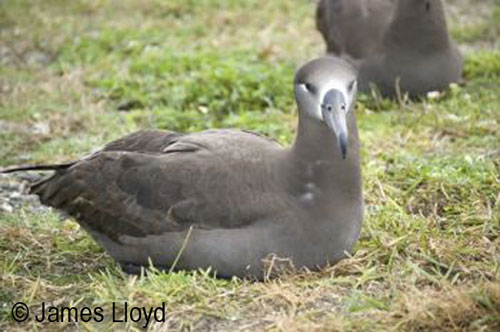On 9 December last year shortly before dawn a storm described as “a massive low pressure system from the north” and a “microburst” hit 105-ha Tern Island, part of the French Frigate Shoals in the USA’s North-Western Hawaiian Islands, which form part of the Papahanaumokuakea Marine National Monument which is also a World Heritage Site. The storm that came with heavy rain and lightning caused most of the ageing buildings that made up the island’s field station to collapse, in turn sending debris flying into the bird colonies. Fortunately there was no loss of human life and the field team of a U.S. Fish and Wildlife Service biologist and four volunteers was successfully evacuated in rough seas to Honolulu shortly afterwards (click here). A blog by Mike Johns, one of the field team, graphically describes and illustrates the devastation including pictures of incubating Laysan Phoebastria immutabilis and Black-footed P. nigripes Albatrosses killed by pieces of collapsed buildings.

Black-footed Albatross. Photograph by James Lloyd
“It was very difficult seeing albatrosses, birds that I have been admiring for years, with broken wings and bloody necks stuck beneath sheets of wall panels. Some were killed instantly by projectiles, others were flattened on their nests, and many were simply limping around with mangled wings. Since the debris from our buildings had inflected the most damage to the wildlife, it was our responsibility to euthanize the suffering birds. Something I hope to never have to do again. The death count is as follows: 62 Brown Noddies, 97 Black Noddies, 10 White Terns, 17 Red-footed Boobies, 6 Great Frigatebirds, 1 Pacific Plover, 24 Laysan Albatross, and 22 Black-footed Albatross, for a total of 239 birds of which 79 were banded” (click here).
The evacuation has also halted Tern Island’s research programme which included breeding albatross counts: “[w]e’ve spent the last few months mostly doing maintenance on the place, and setting up plots in preparation for the albatross breeding season. I had just put most of the nest markers out in the albatross plots, and were starting to see the Bonin Petrels build nest cups in the artificial burrow boxes. I was really looking forward to following these birds for the next three months, banding them, watching how the mates take turns incubating the eggs, seeing the first chicks hatch, and now we have to abandon it all”.
This is not the first evacuation from Tern Island due to bad weather. In 2009 the field team was flown out as a precautionary measure ahead of a hurricane (click here).
Find more news on the Tern Island storm at:
http://www.fws.gov/pacific/news/news.cfm?id=2144375157
http://www.fws.gov/pacific/news/news.cfm?id=2144375164
Tern Island was in the news last year with a report of Black-footed Albatrosses killed by collisions with aeroplanes in 2008 (click here). Fortunately for the island’s birds, it seems flights in and out of Tern Island have since been halted and all supply is now by sea.
The Albatross and Petrel Agreement extends it sympathies to the evacuated Tern Island team and is grateful they are all safe after their terrifying experience.
John Cooper, ACAP Information Officer, 16 January 2013

 English
English  Français
Français  Español
Español